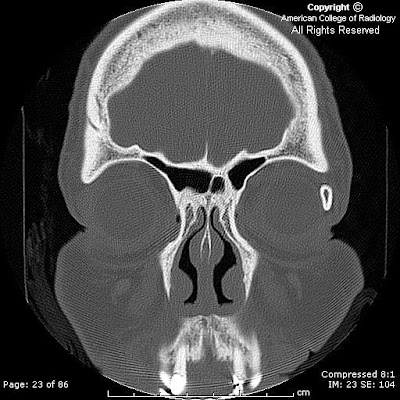



Findings
Completely ossified left lacrimal gland with no soft tissue mass, associated superficial inflammatory change or proptosis.
Diagnosis: Pleomorphic Adenoma of the lacrimal gland
Pleomorphic adenomas (benign mixed tumors) are the most common major salivary gland tumor often found in the parotid glands. When seen in minor salivary glands, the hard palate and the upper lip are the most common locations. It is, however, the most common epithelial tumor of the lacrimal gland. Approximately 50% of lacrimal masses are secondary to epithelial tumors; the other 50% are due to lymphoid and inflammatory causes. It will usually present as a palpable lacrimal fossa mass or proptosis. Other lacrimal gland tumors include: germ cell (dermoid and epidermoid), lymphoma/leukemia, metastasis, and sarcoma.
Pleomorphic adenomas are composed of epithelial and connective tissue components. Lesions may have a variable histology with growth patterns in sheets, strands, or islands of spindle and stellate cells with a myxoid configuration occasionally predominating. Cystic degeneration, squamous metaplasia, calcification or ossification may be observed in lacrimal gland pleomorphic adenomas. There may or may not be lytic remodeling or erosion of adjacent bone depending upon the chronicity of the tumor; adjacent bone abnormality does not necessarily confer malignancy. A small percentage of pleomorphic adenomas may undergo malignant transformation.
Nessun commento:
Posta un commento